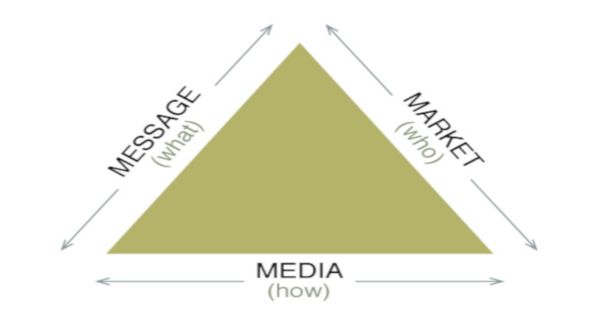Let’s face it: in today’s crowded digital world, simply having a great product or a clever ad isn’t enough. Your message can be a masterpiece, but if it lands on the wrong person at the wrong time, it’s just noise.
This is where the timeless wisdom of legendary copywriter Clayton Makepeace—and his focus on the three pillars—comes in. He taught a principle that is just as vital now as it was when direct mail ruled the roost: the unshakable power of the Message, Market, and Media Match.
It’s not some fancy, new-fangled growth hack; it’s the fundamental physics of persuasion. Get this trinity right, and you don’t just get clicks—you forge a connection that converts.
1. The Market: It All Starts (and Ends) With Them
Think of your market not as a spreadsheet of demographics, but as real people with real problems, fears, and dreams.
As Makepeace would argue, the market is the single most important factor. If you’re talking to the wrong people, no amount of genius copywriting will save you.
- Go Beyond the Surface: Don’t just know their age and income; dive into their psychographics. What keeps them up at 3 AM? What are their core beliefs? What words do they use to describe the problem your product solves?
- Find Their Hot Button: Your product might have ten benefits, but only one or two will truly resonate with a specific market segment. Identify the dominant emotional or financial pain point that they are actively searching for a solution to. That’s your hook.
2. The Message: Speaking Their Private Language
Once you know your market intimately, crafting the message becomes less about “writing” and more about “mirroring.” The best copy sounds like a conversation—one the prospect is already having with themselves.
Your message must:
- Use Their Language: If your market uses jargon or slang, use it. If they speak in technical terms, speak technically. If they are beginner-level, speak plainly. A message that uses their specific vocabulary immediately signals, “I get you.”
- Validate Their Pain: Start by showing them you understand their struggle completely. Before you introduce your solution, you must confirm that you know exactly how frustrating or painful their current situation is.
- Deliver on the Promise: The headline (the “big idea”) must make a promise, and the rest of the message must deliver on it with credible evidence, testimonials, and a compelling offer.
3. The Media: Meeting Them Where They Are
Finally, the media is the vehicle for your message. It’s the physical or digital space where the market consumes information. The wrong medium can sabotage the perfect match between message and market.
- Format Matters: Is your market most receptive to a quick, punchy video ad on a social platform? Or do they need a long-form, in-depth article or VSL (Video Sales Letter) sent via a dedicated email list? You wouldn’t try to sell a complex financial product with a single Instagram story.
- Timing is Key: When are they most receptive? A B2B message might be best received in a LinkedIn email during business hours, while a message about a new streaming service might land best on a Friday evening.
- Consistency is Trust: The experience across your ad, landing page, and follow-up emails must be seamless. If your Facebook ad promises “5 Fast Ways to Save on Taxes” but the landing page is a generic company homepage, the media mismatch creates instant friction and lost trust.
The Power of Alignment
The true magic happens when all three elements snap perfectly into place.
Think of it like a three-digit lock: The Market is the first number, the Message is the second, and the Media is the third. You can have two of the three correct, but the vault door of conversion will remain stubbornly shut. Only when all three align—when the Right Message is delivered through the Right Medium to the Right Person—does your marketing reach its full, magnetic potential.
In a world full of noise, this is the simple, human-centric framework that cuts through. It’s not about being louder; it’s about being in the right place, at the right time, saying exactly what your prospect is ready to hear. And that, in a nutshell, is the foundation of every winning campaign.




